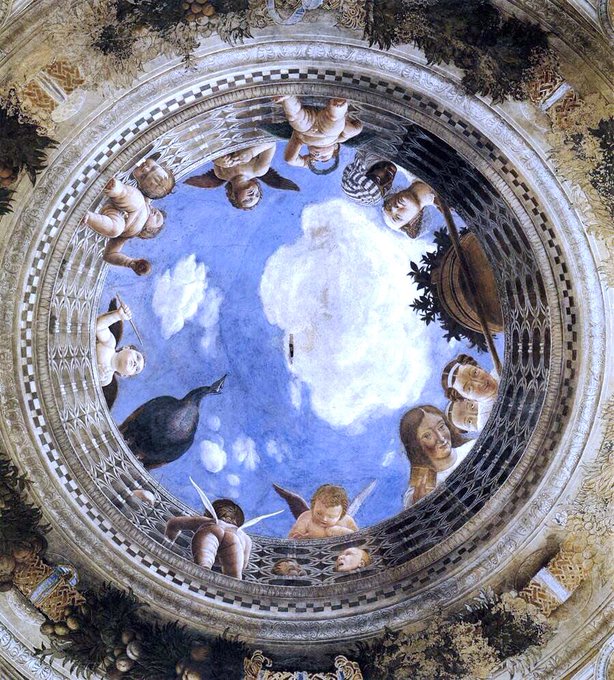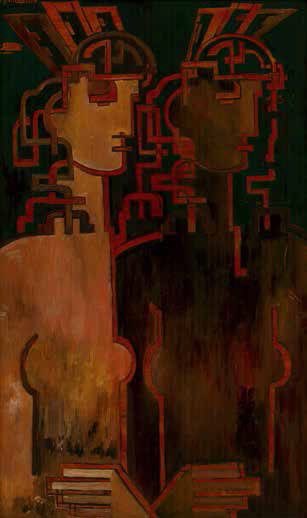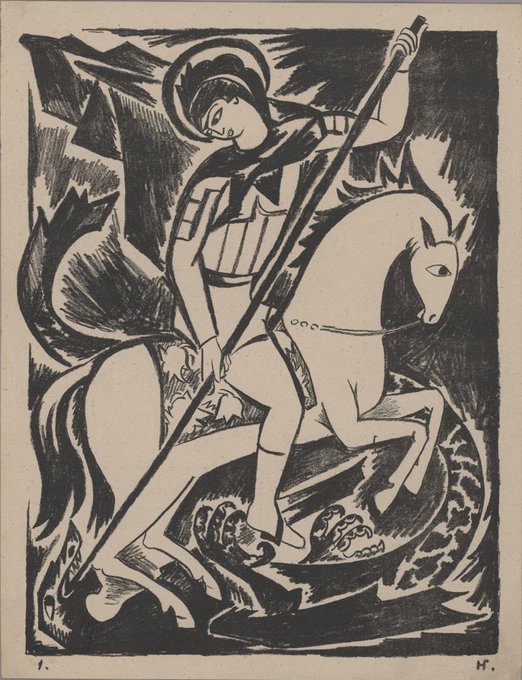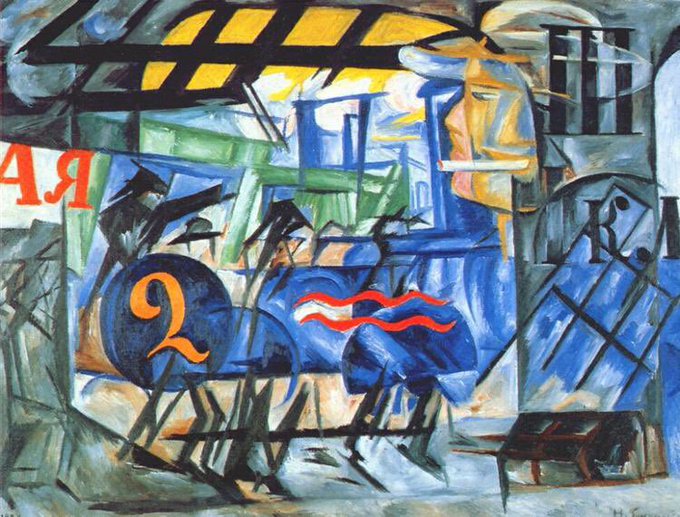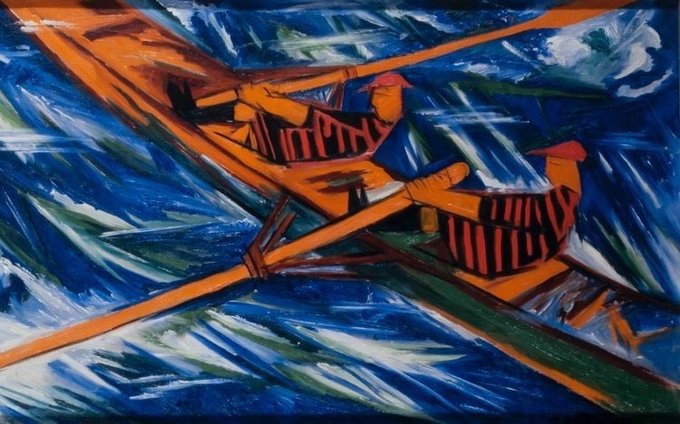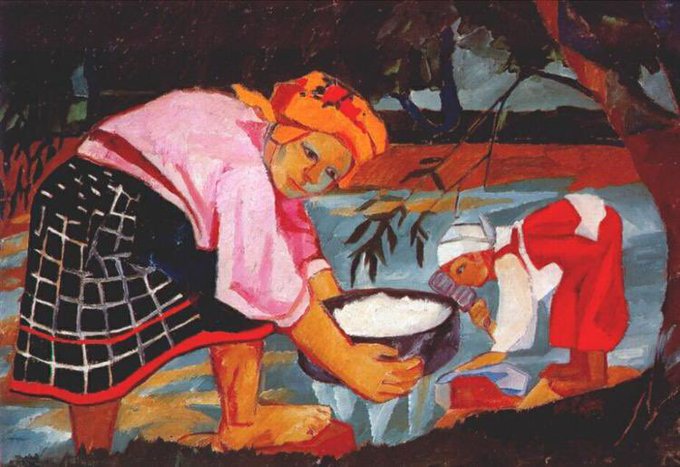Squarcione taught him Latin & he was open to Florentine influences. The two split when Mantegna turned 17. Drawing (c1450), St Bernardine (1450). Despite their break Squarcione imbued in his student a commitment to placing contemporary art in the context of the Roman antique
Thread: Andrea Mantegna (c1431-1506) was an Italian Renaissance painter & antiquarian. His work linked modern painting with Roman antiquity. Oculus, Camera degli Sposi (1465-74), Madonna & Child (c1455) & Portrait of a Man (c1470). He is one of my favourite artists
Goncharova became a French citizen in 1938. Costume (1935), Book Covers (1936-7) & Ballet Souvenir Cover (1936-7). It’s notable that her illustrations are much more conservative than her paintings yet are captivating.
Her image of women is startlingly modern - it could be from the 1980s! Yet the Still Life might be 1950s. Both works show her as a woman decades more advanced than the zeitgeist. Amazing! Women (1928), Still-Life (1929), Mirage (1930) & Abstract (1930)
What’s fascinating about Goncharova is her ability to jump from art style to style at the same time. Such diversity is really rare (Picasso did the same). Composition (1920), Two Russian Maidens (1920), Composition (1920) & Landscape (1920)
From 1911 she was a key member of the Blaue Reiter. Curtain for Le Coq d’Or (1914), St George the Victorious (1914), Forest (Red-Green), 1914 & Composition (1914). The Blue Rider Group was the most significant expressionist one. She also explored Fauvism.
Goncharova was at the forefront of Futurism with its excitement regarding modernity, electricity & speed. Portrait of Larionov & his Platoon Commander (1911), Harvest (1911), The Little Station (1911) & The Rowers (1911)
Together with other artists interested in Modernism she co-founded the Jack of Diamonds (1910), a radical independent exhibiting group. Gardening (1908), Fishing (1909), Haycutting (c1910) & Boy with Rooster (1910)
Thread: Natalia Goncharova (1881-1962) was a significant member of the Avant-Garde in Russia. Her work is highly valued given her prominence in modern art movements of the 20th century. Peasant Woman (1910), Peasant Woman (1910) & Pillars of Salt (1908). She died on this day.
Lavery depicted both nationalist & unionist traditions & moved easily between parties. The 12th July, Portadown (1928), Ramsay MacDonald (1931), Sunbathers (1936) & Coronation Procession (1937)




